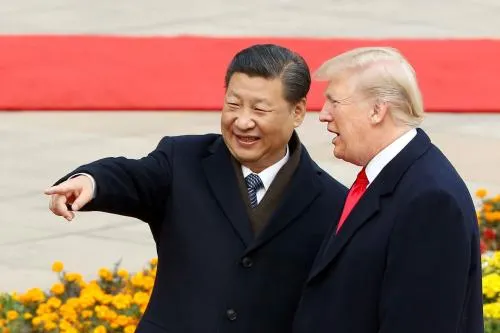A New Chapter in Trade Wars
The United States has imposed new tariffs on imports from Canada, Mexico, and China, escalating trade tensions and raising concerns about global economic stability. This decision, made by the U.S. government, is expected to impact multiple industries and lead to potential retaliatory actions from affected countries.

What Are Tariffs and Why Do They Matter?
Tariffs are taxes imposed on imported goods to make foreign products more expensive, thereby encouraging consumers to buy domestic alternatives. While this can help local industries, it often leads to higher prices for consumers and strained international relations.
Key Highlights:
- The U.S. government announced tariffs targeting steel, aluminum, and various other goods.
- Canada, Mexico, and China are among the top trading partners affected.
- Businesses fear supply chain disruptions and rising costs.
- Experts warn of potential retaliation from affected nations.

Breakdown of Tariffs Imposed
Tariff on Canada
The U.S. has imposed increased duties on Canadian aluminum and steel, citing concerns over market imbalances.
- Industries Affected: Automotive, construction, packaging.
- Canadian Response: The Canadian government has condemned the move and is considering countermeasures.
- Potential Impact: Increased production costs for U.S. manufacturers relying on Canadian raw materials.
Tariff on Mexico
Mexico has been hit with tariffs on agricultural goods, electronics, and machinery exports to the U.S.
- Industries Affected: Agriculture, automobile manufacturing, electronics.
- Mexican Response: Officials are in discussions about imposing retaliatory tariffs on American agricultural products.
- Potential Impact: Higher prices for American consumers on fruits, vegetables, and automobiles.
Tariff on China
China faces the steepest tariffs, with additional duties on electronics, machinery, and textiles.
- Industries Affected: Technology, manufacturing, clothing.
- Chinese Response: China has vowed strong countermeasures, potentially targeting U.S. tech firms.
- Potential Impact: Increased costs for smartphones, computers, and clothing in the U.S.

Why Is the U.S. Imposing These Tariffs?
The U.S. government justifies these tariffs as necessary to:
- Protect American Jobs: Encouraging domestic production by making foreign goods more expensive.
- Address Trade Imbalances: Reducing the U.S. trade deficit with these nations.
- Counter Alleged Unfair Trade Practices: Accusing foreign competitors of dumping cheap products into U.S. markets.
Economic and Political Reactions
Domestic Reactions in the U.S.
- Supporters’ Viewpoint: Some American manufacturers and steelworkers support the move, claiming it will protect jobs.
- Opposition from Businesses: Many U.S. businesses worry about rising costs for imported materials, which could hurt their competitiveness.
- Consumer Concerns: Shoppers may see price hikes on everyday products due to increased import costs.
Global Response
- Canada, Mexico, and China’s Retaliation: Each country is considering imposing its own tariffs on U.S. goods.
- World Trade Organization (WTO): The WTO is monitoring the situation and may intervene if the tariffs violate international trade agreements.
- Stock Market Reactions: Markets have shown volatility amid concerns of an escalating trade war.
Potential Consequences of the Trade Dispute
Short-Term Effects:
- Higher prices on goods imported from Canada, Mexico, and China.
- Strained diplomatic relations between the U.S. and its trade partners.
- Disruptions in global supply chains, affecting businesses worldwide.
Long-Term Effects:
- A prolonged trade war could slow economic growth in the U.S. and globally.
- U.S. companies might seek alternative suppliers or relocate manufacturing.
- Consumers may experience continued price increases on imported goods.

What’s Next? Possible Resolutions
As tensions rise, several scenarios could unfold:
- Trade Negotiations: Countries may come to the table to renegotiate trade agreements.
- Further Tariff Escalations: If no agreement is reached, additional tariffs could be imposed.
- Legal Challenges: Affected countries could challenge U.S. tariffs in international courts.
- Consumer Adaptation: Businesses and consumers might shift to domestic alternatives or other international suppliers.
Conclusion: The Uncertain Road Ahead
The latest round of U.S. tariffs on Canada, Mexico, and China marks a significant shift in global trade dynamics. While the move aims to protect American industries, it risks triggering a full-scale trade war with consequences that could ripple through the global economy. As the situation unfolds, businesses, consumers, and policymakers will closely watch the developments, hoping for a resolution that balances economic interests with fair trade practices.
NASA Announces 10% Workforce Reduction Due to Budget Cuts—What’s Next?






